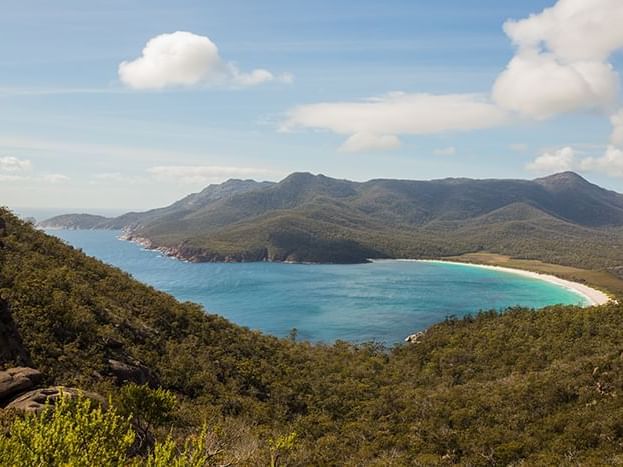Bay Whaling at Freycinet
During the early 1800s, whaling became one of the first major export industries in the new colony of Van Diemen’s Land. From the 1820s, shore-based, or bay whaling, stations were established in sheltered bays, close to the migratory paths of the favoured species for hunting—the southern right whale. These huge, slow swimming whales were considered the ‘right’ whales to hunt because they swam close to shore, floated when dead and provided a rich source of oil. Whale oil was in high demand for fuel, and whale bone was used for a range of purposes, including women’s corsets and skirt hoops.
The Old Fishery
Whaling reached its peak in Van Diemen’s Land by the 1930s, with more than 30 bay whaling stations operating on the colony. It was a hard and dangerous industry, but the financial rewards were great. It’s estimated that almost 8,000 southern right whales were killed during the first 70 or so years of settlement.
The first bay whaling station at Freycinet, the Old Fishery, was established in 1824 at Parson’s Cove by Swansea resident, George Meredith. There were also whaling stations at Sleepy Bay, Wineglass Bay and Bryans Beach. Whales were abundant in those days, and we can now only imagine the blood and stench that spilled into Freycinet’s beautiful bays during the industry’s peak.
The decline
The slaughter of whales was indiscriminate, and by the 1840s bay whaling had begun to decline, due largely to the decimation of the local whale population. The industry had all but ceased by 1850, to be replaced by the deep sea (also known as pelagic) whaling industry, which saw fleets of whaleboats head out to sea in pursuit of sperm whales. By the 1880s the local industry had ground to a standstill.
Today, evidence of whaling in Freycinet National Park has all but vanished. Whalebone is occasionally seen, exposed on the seabed or washed ashore, and some hut foundations and other built remnants are the only reminders of an industry that once drove the local economy.
Watching whales at Freycinet
After the devastation of the bay whaling industry, southern right whale numbers dropped to as few as 300 individuals by the 1920s. The species came under international protection in1934 and is still recovering.
Southern right whales have begun to return to Tasmanian waters and the east coast is one of the most reliable places to see them. They are most often sighted in sheltered waters, such as Great Oyster Bay, between May and November, during their annual northern migration.
